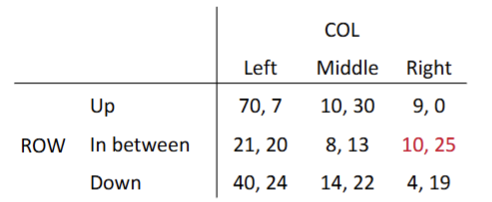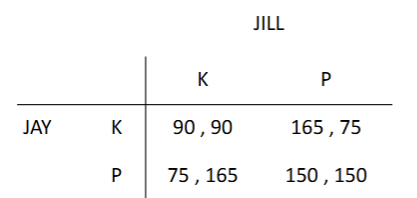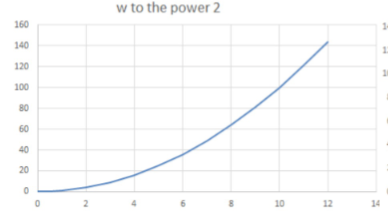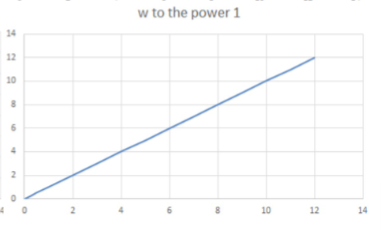econ 373
1/61
Earn XP
Description and Tags
game theory !
Name | Mastery | Learn | Test | Matching | Spaced |
|---|
No study sessions yet.
62 Terms
players
who’s involved
strategy
choices available to the players
what they can do
complete set of instructions for playing the game
strategy set
all the options they can choose from
straegy combination
a set of strategies for all players which fully specifies all actions in a game
must include 1 and only 1 strategy for every player
preference ordering
what would they prefer
payoff function
describes the outcome of a game for a player
strategic forms
simultaneous games
features a payoff matrix
extensive form
sequential games
features a game tree
decision node
a player’s choice of movement that they could choose
seen in extensive form games
terminal node
happens at the end of game
says the payoff of that path
kiss
keep it simple stupid
best response
best strategy to each move the opponent makes
non-cooperative games
games in which player choose their strategies independently
unique best response
mutually consistent best response
nash equilibrium
a strategy combination in which everybody is playing their best response
strict nash equilibrium
a strategy combination in which everybody is playing their unique best response
strongly dominant strategy
UBR to all possible SC of all players
weakly dominant strategy
BR to all SC, UBR to at least 1
strong dominant strategy equilibrium
everyone’s strongly dominant strategy matches with the others
weak dominant strategy equilibrium
at least 1 strategy is weakly dominant
rational players
individuals pursue their own self-interest , choose what they most prefer
common knowledge
pareto-optimal
no other feasible or attainable situation such that at least 1 person is better off and no-one is worse off
pareto-dominates
at least 1 person is better off w/ strategy A than w/ B
no-one is worse off with strategy A than with B
pareto-frontier
the set of all pareto-optimal strategy combinations

which combinations are in the pareto frontier
{(up, left), (up, middle), (down, left)}

which is the NE? is it dominant? is it strict? is it pareto-optimal? which are the pareto-optimal strategy combinations
(k,k)
strict dominant strategy
not pareto-optimal
everything except the NE is pareto optimal
certainty equivalent (ce)
the price between the riskless prospect and the risky prospect in which your indifferent between
(1: ___)
expected value (ev)
probability weighted average of winnings from the prospect
notation for risky prospects
(p1, p2, …. pn : w1, w2, …. , wn)
risky prospects
price w1 with probability 1 and so on and so forth
probabilities must equal 1
expected value of prospect (1:wi)
ev((1 : wi)) = 1 x wi = wi
ev((p1, p1,….,pn : w1, w2, …. , wn)) = p1w1 + p2w2 + … + pnwn
bernoulli payoff function
U(w)
U = sqrt(w)
function U(w) is supposed to capture the preferences of the person who is doing the choosing
expected utility (eu)
the probability weighted average of the utility of winnings from the prospect
__((p1,p2, …, pn : w1, w2, …., wn)) = p1U(w1) + p2U(w2) + … + pnU(wn)
(the sum of pnU(wn) added together)

expected utility hypothesis
for every person there exists a payoff function, U(w), such that
the person prefers prospect A to prospect B if and only if the expected utility of prospect A is larger than the expected utility of prospect B
the person is indifferent between prospects A and B if and only if the expected utility of prospect A is equal to the expected utility of prospect B
non-satiation assumption
larger prizes are preferred to smaller prizes
risk of a prospect
the volatility or variation in the returns from it
the higher the volatility → the larger the risk
how to measure risk
the variance of the returns offered by the prospect
variance of returns
the sum
__ ((p1, p2, …, pn : w1, w2,…., wn)) = p1 (w1-ev)2 + p2(w2 - ev)2 + … + pn(wn - ev)2
positive var
any prospect in which all of the probabilities pi are strictly less than 1
indicative of risk
risk averse
for a risky prospect
ce < ev
concave graph

risk inclined
for a risky prospect
ce > ev
convex graph

risk neutral
for a risky prospect
ce = ev
linear graph

expected utility theorem
person prefers prospect A to prospect B if and only if the EU of prospect A is larger than than the EU of prospect B
continuity axiom
prospect → w1, wk, wn → 1 < k < n
there exists a probability ek in the open interval (0, 1) such that the person about whom we are talking is indifferent between (0,1,0 : w1, wk, wn) and (1- ek, 0, ek : w1, wk, wn)
decision makers are indifferent between a gamble and a specific probabilistic combination of a more preferred and a less preferred gamble
mixed strategy
a just probability distribution over the player’s pure strategies or actions
mixed strategy set
the set of the probability distributions over the player’s pure strategies or actions
evolutionary game theory
seeks to identify patterns of behaviour in populations that are evolutionary stable
evolutionarily stable strategies
a strategy that, when adopted by most of a population, cannot be invaded or replaced by alternative strategies
monomorphic population
whole population consists of 1 type
fitness
the likelihood of reproductive success in a species
polymorphic population
neither pure phenotype can be an evolutionary stable strategyq
strategy sapce
a graph that shows every possible strategy that can be played along with the chances in which they would be played

length of a subgame
the number of decision nodes along the longest path contained in the subgame
subgame
smaller game within a larger game
path
a sequence of moves and their subsequent outcomes, starting from the initial node and culminating in a terminal node
strategy combinations in extensive forms
composed of a strategy for both players
must specify an action for each decision node (/player)
subgame perfect equilibrium
for every subgame, the strategy combination induced by the SPE strategy combination is a NE strategy combination for that game
kuhn’s algorithm - backward induction
beginning with the subgames (or subgame) of length 1
find the choices or actions that maximize the payoff of the players who are called upon to make choices at these nodes
prune the game tree by xing out the branches that correspond to actions that are not equilibrium actions in the subgame under consideration
continue working backwards until you’ve found the equilibrium action (or actions) for the longest subgame (or subgames), you have found the SPE strategies of all players
credible promises
“I (person B) promise that if you (person A) choose w instead of x, I will choose y instead of z”
if action w (having been taken by person A), person B is better off keeping her promise (by taking action y) than she would be if she did not keep it (by taking action z)
credible threats
“if you (person A) chooses x instead of w, I (person B) will choose y instead of z”
if action x (having been taken by person A), person B is better off fulfilling her threat (by taking action y) than she would be if she did not fulfill it (by taking action z)
ordinal payoffs
ranking all the outcomes from best to worst (based on highest number to lowest)